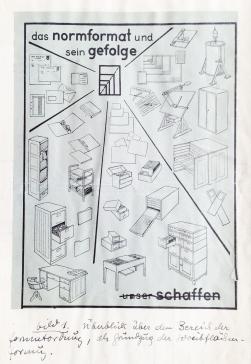As both normed object and carrier of further norms, the two-dimensional sheet of paper was the center of a systematized corpus of norms. My project poses technical norms as objects of design in twentieth-century Germany to uncover how institutions produced moral values through the specification and dissemination of normed objects. As the modernist avant-gardes fabricated normalizing objects toward a new universal aesthetic, bureaucrats instrumentalized the norm as a shared tool to (re-)build German dominance. While the quest for idealized geometric proportions has driven architectural form-making since the Renaissance, the advent of standardized mass-production exacerbated the norms’ moral charge: by dimensioning the window, norm-makers framed the inhabitant’s view of the world; by formatting paper, they shaped the contact between citizen and state.
As a concrete tool for shaping the environment, norm-making proved to be an astonishingly resilient practice, lodged in the inertia of institutions. Foregrounded by the contested iterations of architectural modernism, this project reveals the design norm’s pervasive percolation throughout the Weimar Republic, the Nazi regime, and the first decade of postwar reconstruction. Norm principles of tolerance, scaling, and divisibility became tools for the shaping of a new modern totality: one ostensibly displaced to a system of measures and the specification of tolerances. This project contends that administrative practices pervasively shaping the built environment must be accounted for to expand architectural history beyond a rarefied discourse about the avant-gardes. As part of a larger intellectual project, it undermines assumed distinctions between an enlightened rationality of technology and a re-enchanted ideology of aesthetics and morals.

